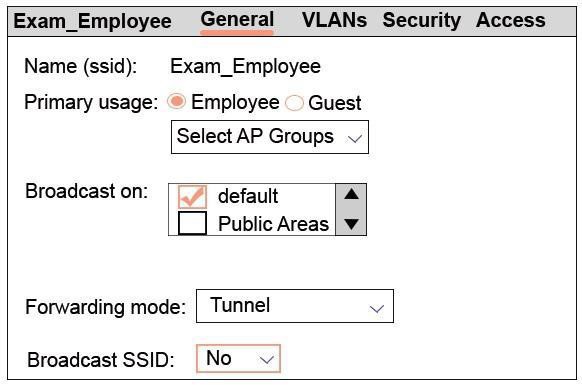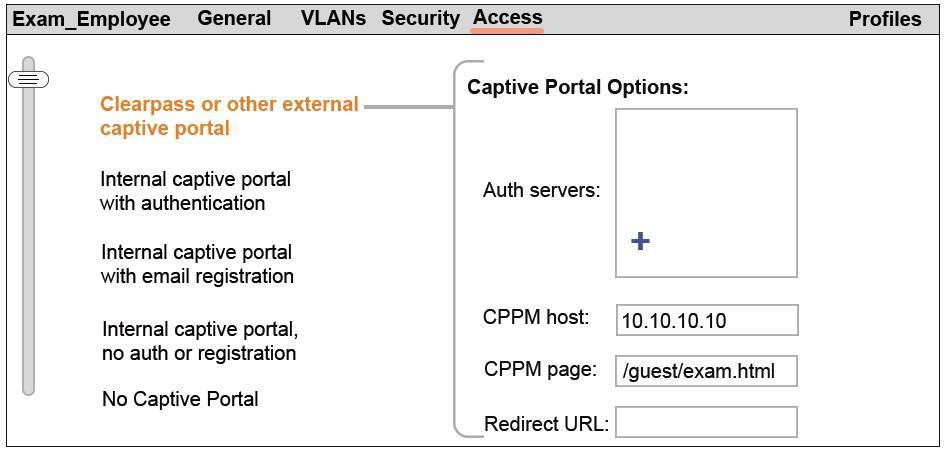
- Email support@dumps4free.com

Refer to the exhibit
What describes the behavior for this WLAN?
A.
APs in the default group broadcast the SSID. Clients can connect to the WLAN on APs
in the default group only.
B.
No APs broadcast the SSID. Clients cannot connect to the WLAN until administrators
activate it.
C.
No APs broadcast the SSID. Clients can connect to the WLAN on APs in the
default group only.
D.
APs in the default group broadcast the SSID. Clients can connect to the WLAN on APs
in any group.
No APs broadcast the SSID. Clients can connect to the WLAN on APs in the
default group only.
What is a valid way to deploy an Aruba Mobility Master (MM)?
A.
as a subscription-based service through the Aruba cloud
B.
as a role on a Mobility Controller 7030 that is deployed as a standalone controller
C.
as a virtual appliance on a server that meets the recommended hardware requirements
D.
as a role on a Mobility Controller 7240 that is deployed as a master controller
as a virtual appliance on a server that meets the recommended hardware requirements
What is one difference between captive portal authentication and 802.1X authentication?
A.
802.1X authentication always authenticates the wireless client, while captive portal
authentication always authenticates the wireless user.
B.
802.1X authentication occurs at Layer 2, while captive portal authentication occurs at
Layer 3.
C.
802.1X authentication must use an LDAP server, while captive portal authentication can
use a RADIUS server or an LDAP server.
D.
802.1X authentication is typically implemented without encryption, while captive
authentication is often combined with WPA or WPA2.
802.1X authentication occurs at Layer 2, while captive portal authentication occurs at
Layer 3.
A network administrator needs to configure firewall rules for three roles:
✑Finance
✑Sales
✑Employee
Several rules apply to both the Employee and Sales roles, but not to the Finance
role. What is the simplest way to configure these rules?
A.
Define the Employee and Sales roles as internal roles, and then configure the rules as global rules for internal users.
B.
Apply these rules as a subnet-based policy, and then ensure that only Employee and Sales users are assigned IP addresses in that subnet.
C.
Select either the Employee or Sales role, and then configure these rules within the global policy.
D.
Create a policy with these rules, and then apply that policy to the Employee and Sales roles.
Create a policy with these rules, and then apply that policy to the Employee and Sales roles.
Refer to the exhibit.
A network administrator creates a guest WLAN on an Aruba Mobility Master (MM). The
exhibit shows some of the settings for the WLAN.
How should the network administrator handle the Auth server settings?
A.
Add an authentication server with the LDAP type and the IP address of the company AD server.
B.
Add an authentication server with the LDAP type and IP address 10.10.10.10.
C.
Add an authentication server with the RADIUS type and IP address 10.10.10.10.
D.
Add an authentication server with the RADIUS type and the IP address of the company AD server.
Add an authentication server with the RADIUS type and IP address 10.10.10.10.
| Page 7 out of 26 Pages |
| Previous |